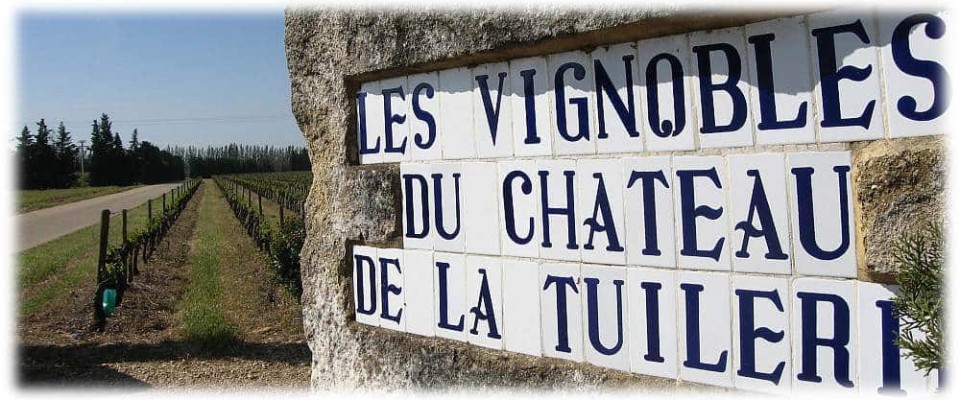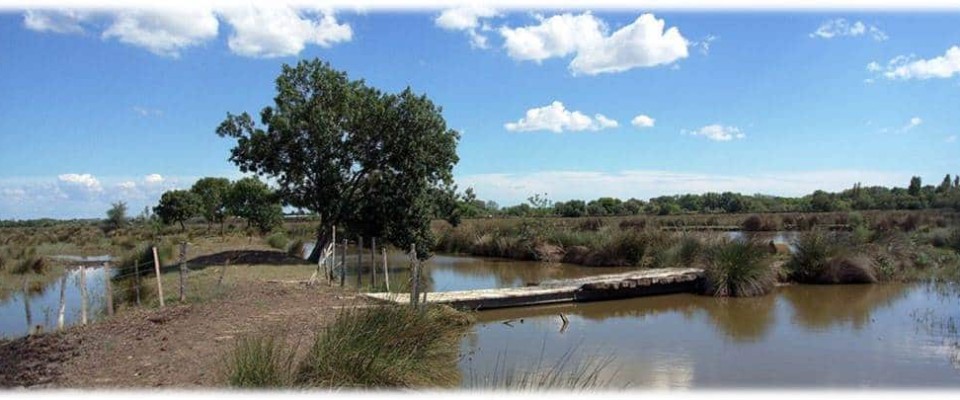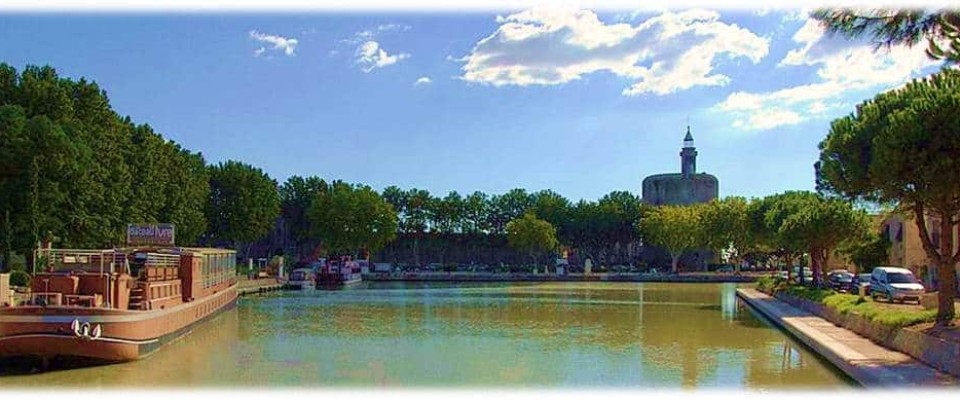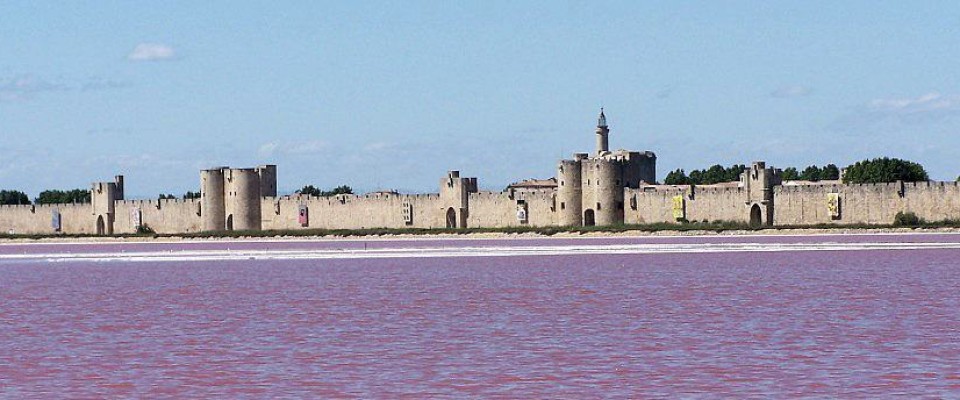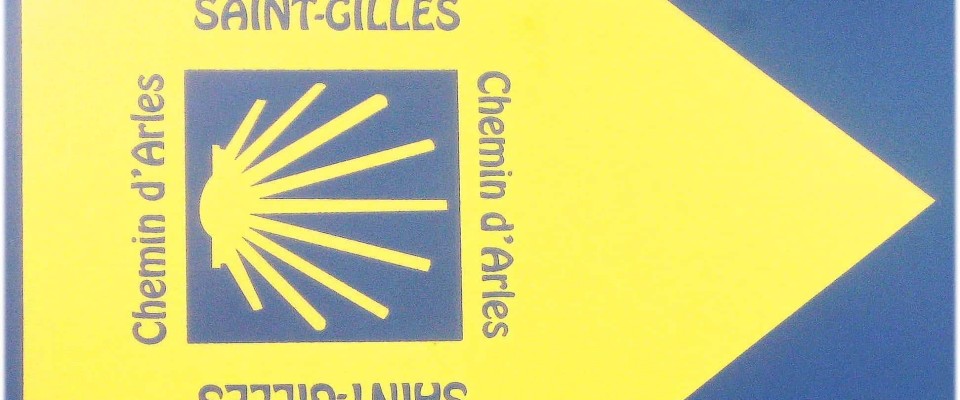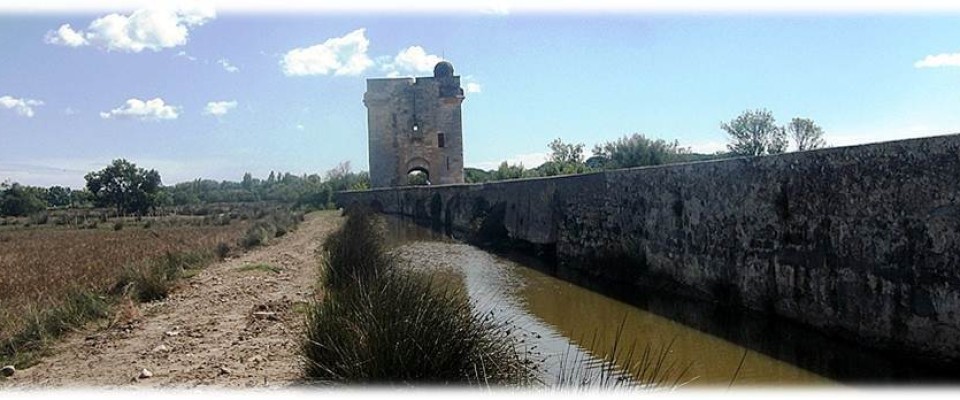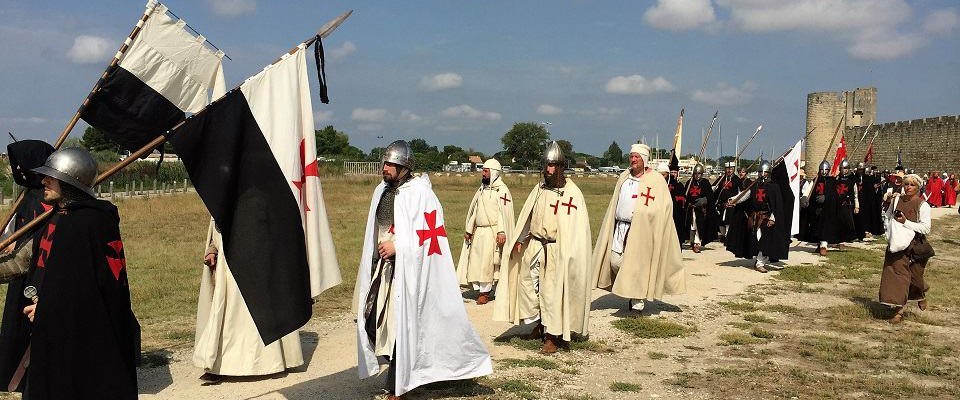Legendary Camargue – The “French Texas”
C
Camargue has three recognizable sectors:
a. The western sector or “Petite Camargue”, largely confined to the Gard, part of the Languedoc-Rousillon region.
b. The central sector or “Grande Camargue”, also known as the “Île de la Camargue”, which lies in the department of Bouches-du-Rhone, part of the Provence, Alpes, Cote d’Azur region.
c. The south-eastern sector or the Ile du Plan du Bourg.
These natural Camargue zones are overlain by three main types of landscape and vegetation determined by the level of salinity and the amount of water :
i) The agricultural Camargue in the higher plains of the north, with its rice paddy fields, cereal crops and market gardening;
ii) The natural Camargue in the low-lying south, where the ‘gardiens’ continue to breed bulls and horses,
iii) les salins, or salt plains, found in both the south east and south west of the delta, dominated by their mountains of pinkish white salt. Evaporation levels exceed that of rainfall, so the water from the two rivers delineating the Camargue triangle is fundamental to the wellbeing of the territory; as too is the intricate system of canals that covers the delta, fed by the Rhone and its smaller tributary.
Perhaps surprisingly, especially when one considers the fragility of the Camargue biosphere, the Camargue has no natural, straight-line trail traversing it East-West or North-South usable for hiking purposes. Thus our walking holidays in France in the Camargue have traditionally had no other option but to rely on the car as a means of getting around independently from one circular hike to the next.
Understandably, such vehicule-led vacations sat awkwardly amidst our quintessentially on foot holidays and our wider commitment to preserving the environment. They were thus dropped from our portfolio.
However, we are delighted to offer you one, short hiking break that introduces you to the essential Camargue. Hiking Camargue is a 4-night, light walking tour that takes you from Roman Nimes to Aigues-Mortes on the Mediterranean Coast – the perfect introduction to the current life and times of this intriguing French delta.
A rich Flora and Fauna
Over 1000 species of flowering plant, or approximately twenty per cent of those recorded in all of France, are found in Camargue. Some species have thrived as a result of the evolution of special varieties adapted to this unique environment; whilst others are very rare in France or even Europe-wide.
To help protect this fragile but rich ecosystem, a National Reserve was created in 1927. It stretches from just north of the Vaccarès Lagoon to the sea. It is a complex mix of fresh water and brackish wetlands. The public is admitted as far as the sea dike and the zone known as La Capelière.
Greater Flamingos (Phoenicopterus roseus) are perhaps the most enigmatic and emblematic part of the Camargue scenery, a protected species throughout the European Union. About 100 000 Greater Flamingos have been counted in the western area of the Mediterranean.
The Tour du Valat has run a ringing program since 1977, in order to monitor this population and there is a “Greater flamingo network” studies breeding patterns on a Mediterranean-wide scale. Since the 90’s, the Tour du Valat has organised Flamingo sponsorship, the funds collected used to buy observation material.
Yet Flamingos remain vulnerable because of high salinity levels in the scant drinking waters. A threat is hanging over most wetlands on which they breed, and their survival of now dependent on a mixture of political pressure and lobbying and efficient conservation measures.
The Camargue’s rich wildlife now requires careful and expensive management of the water resources that support it. Pumping, irrigation and draining stations dot the landscape along with a network of drainage channels throughout the delta.
Despite intensive agriculture, an indigenous wild fauna is extant, with 75 species of vertebrates, comprising fish, 10 amphibians, 15 reptiles (not including turtles) and 398 birds, of which 111 regularly breed.
The woodlands that lie along the banks of the Rhone and on sand dunes south of Vaccarès Lagoon provide habitat for many mammals, including rodents, foxes, and wild boar; and birds such as little egrets and night herons.
Economic activity in the Delta
This began as early as the Middle Ages, when the first clearing and deforestation work was undertaken by members of religious orders. The first of the dykes to keep out the sea and the Rhône were built in the 16th and 17th Centuries.
The current sea dike ‘la digue à la mer’ is about 20 kms long and was built in 1859. A decade later an embankment was constructed along the River Rhone to control flooding. These dikes and embankments created land fit for farming, but cut off the Camargue from its natural and historic supplies of fresh and sea water.
Until the 19th Century, development was basically agricultural, especially sheep farming, and was confined to the north. The development of rice growing after the Second World War led to the creation of a massive hydraulic infrastructure.
Salt marshes near Salin-de-Giraud in the southeast corner of the Camargue produce around 15,000 tons a day in the summer. This is one of the biggest salt works in the world and the industry dates back to Romans times – first century AD.
The large-scale exploitation of the ‘salinas’ began in 1856. The region’s most famous brand is ‘Fleur De Sel de Camargue’, which is hand raked and harvested, with only the top layer of the salt bed being used for table salt.
Lovers of wine will wish to try the unique vins de sable or sand wines, which are produced on the saline soils near Aigues-Mortes, in the bottom left-hand corner of the delta. Listel is the most important brand and ‘gris’ or grey wine (really a very pale salmon pink) is the perfect accompaniment to shellfish.
Nowadays the service sector (tourism, farming for the tourism industry) is becoming increasingly dominant and agriculture is becoming more intensive -irrigation, pesticides, overgrazing and pressure for hunting.
Camargue Bulls are a specialised breed of bull that live in semi-liberty. They are noticeably smaller that most modern breeds of bull and are known for the high quality of their meat, served locally as steaks (Gardiane du boeff) and stews (Ollada or ouillade).
Camargue horses are also a specialised breed that live in semi-liberty and are also relatively small in size. They are one of the oldest breeds in the world, and closely related to prehistoric horses.
Those who breed the horses are referred to as ‘gardians’, a type of gaucho or cowboy. Traditionally, they lived in the ‘cabanes’ or thatched white cottages that one sees dotted around the delta, now more likely to be owned by Parisians or Scandinavians than the locals.
Finally here, urbanization is spreading, with more land being made available for construction.
Hikers with a penchant for coastal walking and wildlife in and around wetlands can explore this magnificent region via this short walking holiday:
Camargue Towns
There are three major towns in the Camargue:
Arles (population 55,000). the unofficial “capital” of the area, is, located at the extreme north of the delta where the Rhone forks into its two principal branches. It is a UNESCO world heritage site and city of culture.
Saintes-Maries-de-la-Mer (population 2,000), a port on the Mediterranean close to the mouth of the Petit Rhône. It lies about 45 km to the southwest of Arles and is closely associated with the Rom Gypsies, with its annual pilgrimage.
Aigues Mortes (population 6,000) the enchanting medieval fortress-town on the far western edge of La Petite Camargue. It is a stunning example of late thirteenth century architecture.
The Camargue Calendar
January: Reed cutting
March: The Arles carnival & The flamingos’ courtship rituals
April: The flamingos’ nest-building period; the Easter festival in Arles; the start of the ‘corrida’, and the “courses camarguaises”; Open days: “Printemps des Musées”
May: the gypsies’ pilgrimage to Saintes-Maries-de-la-Mer; the gardians’ festival in Arles
June: the “Pégoulade” torchlight procession
July: photography festival, with master classes, workshops, etc.; Camargue horse show; Music festival: “Les Sud”; tuna fishing competition at Saintes-Maries-de-la-Mer
August: salt collection – which sometimes takes place in September.
September:salt collection; the rice harvest – which sometimes takes place in October; Camargue horse show; the rice festival.
October:”Courses de taù” (bull festival)
December: “Salon Provence Prestige” – the Christmas market for Provençal products.
You might also like to visit the following link for further info on The Camargue:
- La Camargue
- The National Reserve
- The Tour du Valat
- Arles
- Saintes-Maries-de-la-Mer
- Aigues-Mortes
- The vulnerability of the delta to flooding
![]()


Click to visit The French Hiker’s Guide to Holidaying in the Hexagon and France self-guided walking, trails, trips, places & themes.
